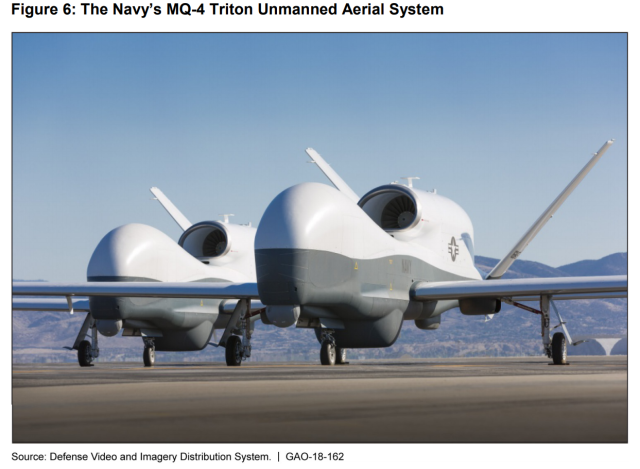Military Pilots: The View from 30,000 Feet
 In June 2018, we reported that to help retain pilots, each military service planned to increase aviation retention bonuses. In addition, the three services have developed a variety of non-monetary retention incentives to ease quality of life challenges such as the frequent moves pilots and their families experience throughout their military careers. For example, each service has pilots that have participated in the Career Intermission Pilot Program, which allows servicemembers to take up to a 3-year break in service in exchange for a period of obligated service when they return. We identified ways that DOD could enhance its pilot retention efforts and made recommendations to do so.
Fighter Pilots in Demand
In April 2018, we reported that fighter pilot staffing levels for the Air Force, the Navy, and the Marine Corps had fallen short of target levels by as much as 27 percent in fiscal year 2017.
Each service has developed workarounds to ensure they have sufficient pilots to deploy, such as
In June 2018, we reported that to help retain pilots, each military service planned to increase aviation retention bonuses. In addition, the three services have developed a variety of non-monetary retention incentives to ease quality of life challenges such as the frequent moves pilots and their families experience throughout their military careers. For example, each service has pilots that have participated in the Career Intermission Pilot Program, which allows servicemembers to take up to a 3-year break in service in exchange for a period of obligated service when they return. We identified ways that DOD could enhance its pilot retention efforts and made recommendations to do so.
Fighter Pilots in Demand
In April 2018, we reported that fighter pilot staffing levels for the Air Force, the Navy, and the Marine Corps had fallen short of target levels by as much as 27 percent in fiscal year 2017.
Each service has developed workarounds to ensure they have sufficient pilots to deploy, such as
- prioritizing staffing fighter pilots to flying positions, instead of rotating them to non-flying positions in headquarters
- using senior pilots to staff junior positions
- having pilots deploy for longer and more frequently than planned
 Use of Unmanned Aerial Systems Growing
Each military service has expanded the use of unmanned aerial systems (a.k.a. drones), which require servicemembers to remotely pilot aircraft for missions such as reconnaissance and precision strikes.
As the numbers and types of these systems increase, there are opportunities for the military services to develop new staffing approaches. We have found that the military services generally use servicemembers and private sector contractors as drone pilots and recommended that they further explore workforce alternatives, such as federal civilian employees.
Use of Unmanned Aerial Systems Growing
Each military service has expanded the use of unmanned aerial systems (a.k.a. drones), which require servicemembers to remotely pilot aircraft for missions such as reconnaissance and precision strikes.
As the numbers and types of these systems increase, there are opportunities for the military services to develop new staffing approaches. We have found that the military services generally use servicemembers and private sector contractors as drone pilots and recommended that they further explore workforce alternatives, such as federal civilian employees.

- Questions on the content of this post? Contact Brenda Farrell at farrellb@gao.gov.
- Comments on GAO’s WatchBlog? Contact blog@gao.gov.

GAO's mission is to provide Congress with fact-based, nonpartisan information that can help improve federal government performance and ensure accountability for the benefit of the American people. GAO launched its WatchBlog in January, 2014, as part of its continuing effort to reach its audiences—Congress and the American people—where they are currently looking for information.
The blog format allows GAO to provide a little more context about its work than it can offer on its other social media platforms. Posts will tie GAO work to current events and the news; show how GAO’s work is affecting agencies or legislation; highlight reports, testimonies, and issue areas where GAO does work; and provide information about GAO itself, among other things.
Please send any feedback on GAO's WatchBlog to blog@gao.gov.
